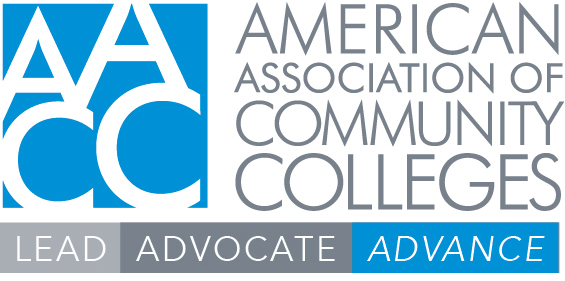The U.S. Education Department (ED) last Friday wrapped up its negotiated rulemaking for the Committee on Institutional and Programmatic Eligibility for Title IV student aid programs. Consensus was reached on only two of the seven regulatory packages being discussed.

Community colleges were represented by primary negotiator Anne Kress, president of Northern Virginia Community College and a member of the American Association of Community Colleges (AACC) board of directors, and alternate negotiator Will Durden, director of basic education for adults at Washington State Board for Community and Technical Colleges.
Community college negotiators withheld consensus on a number of key issues.
Ability to benefit
The week kicked off with negotiations on ED’s proposed standards on ability-to-benefit (ATB) students, i.e., those who lack a high school diploma or GED. The discussion focused on the approval of state plans for ATB students. Under the statute, states may submit plans to identify ATB students, subject to approval by the education secretary — as an alternative to the students passing an approved test or accruing six credits before they can receive federal Title IV aid.

Durden, who negotiated on behalf of community colleges during the ATB discussions, expressed concern that ED did not accept two changes to the regulatory language that he and Kress had proposed. ED’s language included an enrollment cap for ATB equal to 1% of the enrollment at each participating institution during the first two years of a state plan. But Durden noted that cap would greatly limit the number of students who could participate at smaller institutions and instead suggested a cap equal to 1% of the total enrollment of all institutions participating in the state plan.
Additionally, as a part of the process for approving state plans, institutions must demonstrate that ATB students succeed in programs at a rate comparable to those with a high school diploma. ED did not accept the written suggestion by Kress and Durden to set the comparative success rate at 85%, rather than 95% as ED proposed. At the table, Durden then proposed a 75% success rate.
Related article: Using ATB to help adult students
ED reviewed both of Durden’s suggestions during a break and agreed to change the enrollment cap to the greater of either 25 students or 1% of the institution’s enrollment in a compromise between the two parties. However, ED declined to change the success rate from 95%. Because of this, Durden withheld consensus during the consensus check, noting that he would be willing to compromise at 85%. ED declined.
Towards the end of the final day of the week-long session, however, ED revisited ATB. ED ultimately offered to set the success rate at 85%, which the committee, including community colleges, voted in favor of, making ATB one of the two issues that reached consensus.
Gainful employment
The proposed language for the gainful employment (GE) regulations is particularly important for community colleges, given that it determines federal student aid eligibility for all Title IV-eligible certificate programs. However, like much of the other language proposed by ED, the committee did not reach consensus on GE.
Kress was among the six negotiators at the table who withheld consensus for the proposed regulations, most of whom expressed support for the intent of the regulations but took issue with individual parts of the rule.
Related article: Mulling gainful employment regs
Prior to the final week of negotiations, ED added an earnings threshold metric that institutions would have to meet in addition to the debt-to-earnings metric. To pass the earnings metric, the median earnings of GE program completers in the relevant cohort must exceed the median earnings of high school graduates ages 25 to 34 in the state in which the institution is located (or the national median if a program’s enrollment is more than 50% out-of-state students). Several negotiators had concerns about the source of the data and whether it would be a fair comparison for GE program completers.
Other facets of the proposed regulations that non-consenting negotiators cited as reasons for their votes included the lack of a transition period before the regulations took full effect, insufficient opportunity for institutions to appeal ED’s DTE and earnings threshold calculations, and vague certification procedures.
Here’s a more detailed account of the GE discussion and consensus vote during last week’s session.
Certification procedures
During the second week of negotiations, Kress noted her concern about ED’s proposed allowable length of GE programs as outlined in the issue paper on certification procedures. All institutions must be “certified” by ED to quality for the federal aid programs.
In its proposed certification rules, ED defined maximum eligible program length for GE programs that prepare students for state licensure or certification as the lesser of the minimum number of training hours required by the institution’s state or the national median of the minimum number of training hours, as determined by at least 25 states. However, as Kress explained, if the national median for a particular occupation’s training hours is less than the requirement in the institution’s state, the length of the program may meet federal requirements while failing to meet state requirements.
ED’s final revision of this provision would automatically limit financial aid for students in these programs that are longer than the national median, a stated reason for community colleges withholding consensus on the certification procedures issue paper. While she agreed with ED’s goal of preventing a student in one state from spending considerably more time – and money – in an equivalent program than a student in another state, she disagreed with ED’s approach, saying students should not be punished for actions of state licensing boards.
Administrative capability
Negotiators, including those representing community colleges, had expressed concern since the first week of committee meetings about ED’s added criterion that an institution must show it “provides adequate career services to eligible students who receive Title IV, HEA program assistance” to be deemed administratively capable.
Despite continued pushback to clarify or remove the language, ED chose not to make any changes to this section, either prior to the last session or during a break in the discussion before the committee took a consensus vote. This lack of a change was part of the reason that the negotiator for proprietary institutions withheld consensus – as the sole “no” vote – for the standards of administrative capability issue paper.
What’s next
Now that the negotiated rulemaking for the committee has concluded, ED will work to develop a Notice of Proposed Rulemaking (NPRM) for the seven issues that were discussed: administrative capability, ability to benefit, gainful employment, financial responsibility, changes in ownership, certification procedures and 90-10, which only applies to for-profit institutions.
Because consensus was reached on ATB and 90-10, ED is bound by the language agreed upon at the negotiating table for those two issues in crafting the NPRM. However, for the other five issues, including gainful employment, ED is free to develop proposed regulatory language as it sees fit and is not required to take the discussions during the negotiation into account – though the language will most likely align with what the department has already proposed.
The NPRM is expected to be released later this spring or in early summer.





